




A dishwasher is an essential appliance in any kitchen, making the task of cleaning dishes quick and convenient. However, over time, your dishwasher may accumulate mineral deposits, food residue, and unpleasant odors. One effective way to deep clean your dishwasher is by using bleach.
Bleach is a powerful cleaning agent that can effectively remove stains, kill bacteria, and eliminate odors. Before starting the cleaning process, it is important to ensure that your dishwasher is empty and there are no dishes or utensils inside. Additionally, make sure to remove any loose food debris from the filter and spray arm.
To clean your dishwasher with bleach, start by adding one cup of bleach to a dishwasher-safe container. Place the container in the bottom rack of your dishwasher. Then, close the dishwasher and select the hot water cycle. Allow the dishwasher to run its complete cycle, including the drying process.
After the cycle is complete, open the dishwasher and remove the container with bleach. Be cautious when handling the container as it will be hot. Next, use a damp cloth to wipe down the interior of the dishwasher, paying close attention to any remaining stains or build-up. Finally, run another hot water cycle to rinse away any bleach residue.
It is important to note that bleach should only be used on dishwashers made of stainless steel or plastic. Do not use bleach on dishwashers with a stainless steel interior, as it can cause damage and discoloration.
By following these steps, you can effectively clean your dishwasher and ensure that it continues to perform at its best. Remember to clean your dishwasher regularly to prevent the build-up of residue and maintain its efficiency. A clean dishwasher not only improves the longevity of the appliance but also ensures that your dishes come out sparkling clean every time.
When to Clean Your Dishwasher
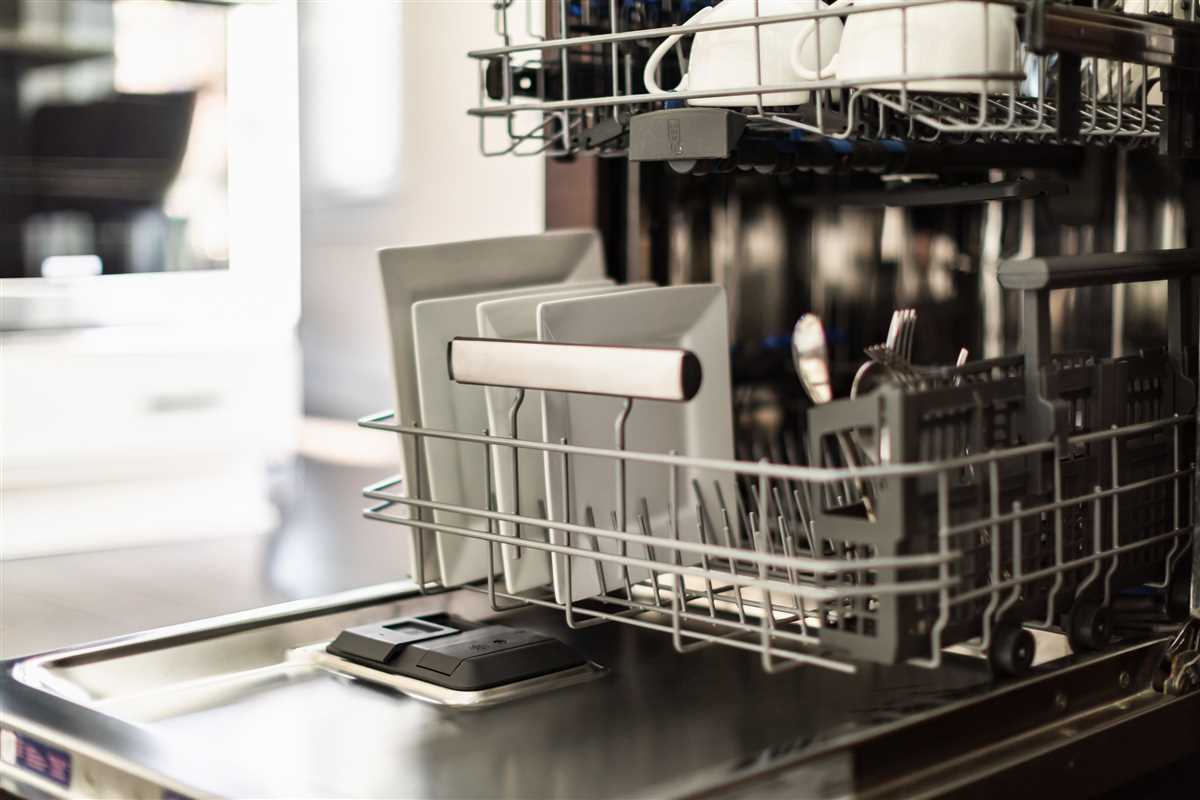
Regularly cleaning your dishwasher is essential for its proper functioning and for maintaining clean and hygienic dishes. Here are some signs that indicate when it’s time to clean your dishwasher:
- Foul Odor: If your dishwasher starts emitting a foul smell, it’s a clear indication that there are food particles and debris stuck in the filters and other parts of the dishwasher.
- Visible Build-up: Check the walls, racks, and filters of your dishwasher for any visible build-up of grease, soap scum, or hard water deposits. These can interfere with the dishwasher’s performance and may even cause damage in the long run.
- Inefficient Cleaning: If your dishes are not coming out as clean as they used to, it could be due to clogged spray arms or blocked nozzles. Cleaning the dishwasher will ensure that water flows freely and effectively cleans your dishes.
Also, it’s a good practice to clean your dishwasher every three to four months even if you don’t notice any of the above signs. This will help prevent the accumulation of dirt and debris, ensuring the longevity and efficiency of your dishwasher.
Gather the Necessary Supplies
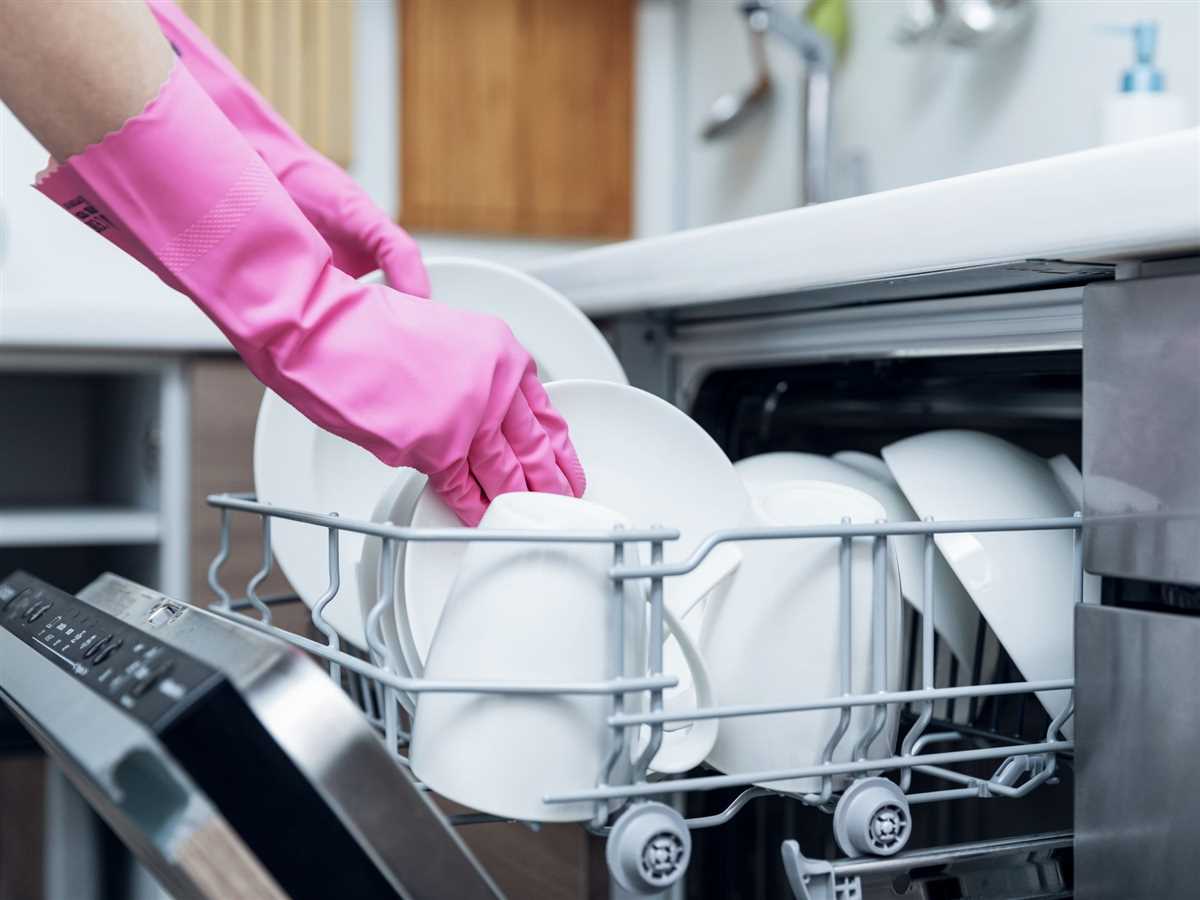
Before you start cleaning your dishwasher with bleach, make sure you have all the necessary supplies on hand. These include:
- Bleach
- Vinegar
- Baking soda
- Soft cloth or sponge
- Old toothbrush
- Small bowl
- Hot water
Note: It’s important to use bleach specifically made for household cleaning. Do not use bleach meant for clothes, as this can damage your dishwasher.
If you don’t have bleach on hand, you can substitute it with a dishwasher cleaner or white vinegar.
Step-by-Step Guide: How to Clean Your Dishwasher
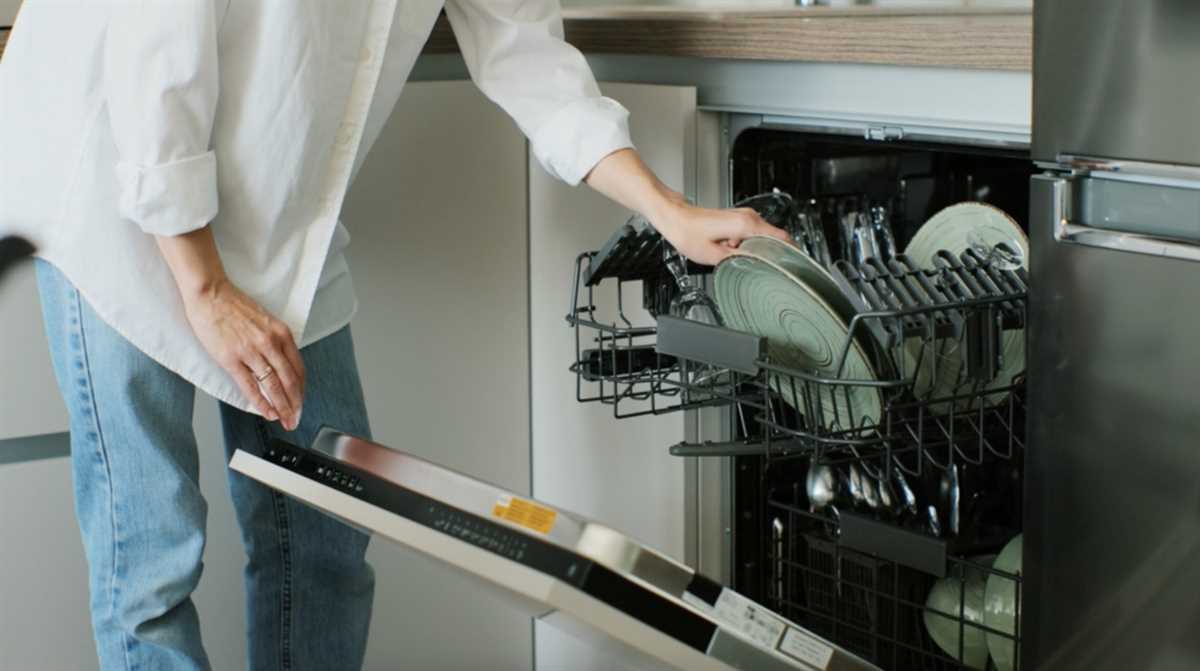
- Step 1: Gather the necessary supplies. You will need bleach, a soft cloth or sponge, and a bowl or cup.
- Step 2: Start by unplugging your dishwasher from the power source to ensure safety.
- Step 3: Remove any leftover food or debris from the dishwasher. Check the filter and the spray arm to make sure they are clear.
- Step 4: Make sure the dishwasher is empty and free of any dishes or utensils.
- Step 5: Fill a bowl or cup with approximately one cup of bleach.
- Step 6: Place the bowl or cup on the top rack of the dishwasher. Make sure it is secure and won’t tip over during the cleaning process.
- Step 7: Close the dishwasher and set it to the hottest and longest cycle. This will help the bleach effectively clean and disinfect the dishwasher.
- Step 8: Start the dishwasher and allow it to run its full cycle.
- Step 9: Once the cycle is complete, open the dishwasher and carefully remove the bowl or cup containing the bleach. Be cautious as it may still be hot.
- Step 10: Use a soft cloth or sponge to wipe down the interior of the dishwasher. Pay extra attention to areas that may have accumulated dirt or grime.
- Step 11: Check the spray arm and remove any clogs or blockages if necessary.
- Step 12: Rinse the dishwasher thoroughly with warm water to remove any remaining bleach residue.
- Step 13: Plug the dishwasher back into the power source and it is ready for use again.
Tips and Precautions for Cleaning with Bleach
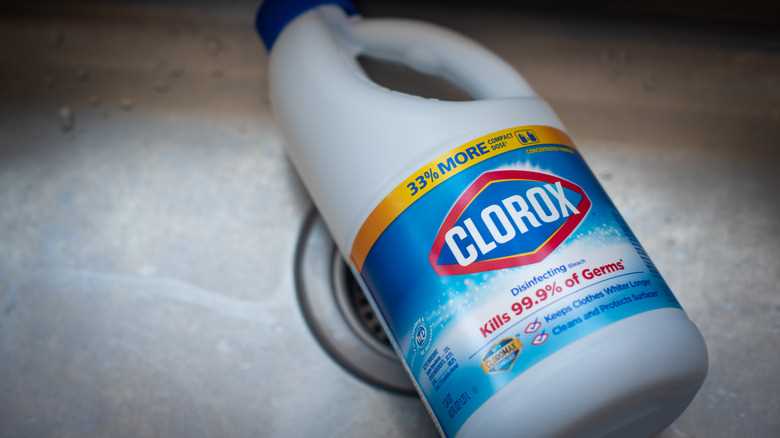
1. Ventilation
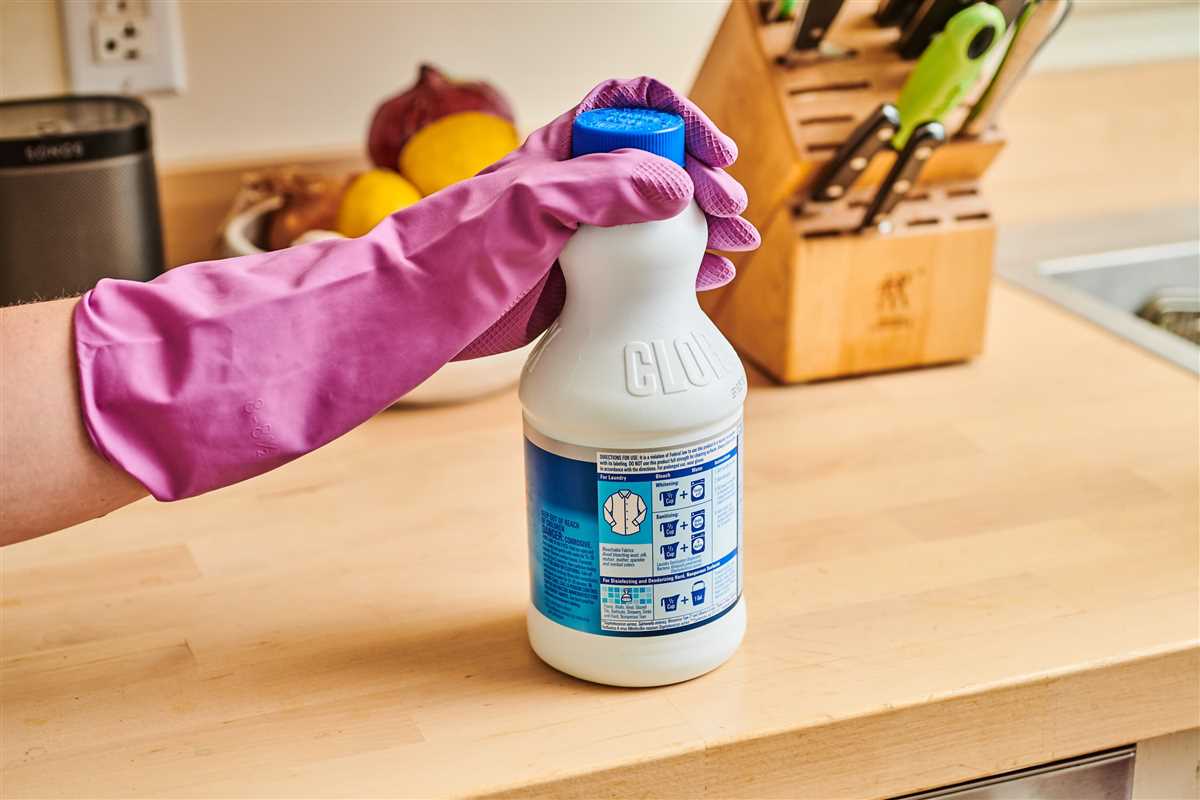
When using bleach for cleaning, it is essential to ensure proper ventilation in the area. Open windows or doors to allow fresh air to circulate, and turn on fans if available. This will help prevent the buildup of fumes and protect your respiratory health.
2. Protect Yourself
It is important to take precautions to protect yourself when using bleach. Wear gloves to avoid contact with your skin and use goggles or safety glasses to protect your eyes from splashes. Additionally, consider wearing a mask or working in a well-ventilated area to further minimize exposure to bleach fumes.
3. Read Labels

Before using bleach, always read and follow the instructions and safety precautions provided on the product labels. Different products may have specific dilution ratios or recommended contact times, so it is important to follow the manufacturer’s guidelines for the most effective and safe use.
4. Do Not Mix With Other Cleaning Products
Never mix bleach with other cleaning products, particularly ammonia or vinegar, as this can produce toxic fumes. This includes dishwasher detergents that may already contain bleach. Mixing chemicals can create hazardous reactions and pose a risk to your health.
5. Test in a Small Area
If you are unsure about the compatibility of bleach with a specific surface, it is always a good idea to test it in a small, inconspicuous area first. Apply a small amount of bleach and monitor the reaction for any signs of damage or discoloration. This will help prevent unintentional damage to sensitive surfaces.
6. Rinse Thoroughly
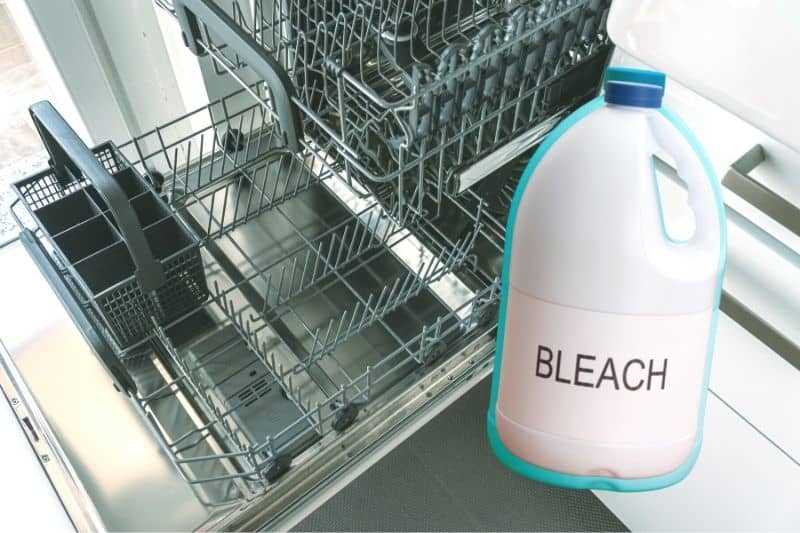
After cleaning with bleach, it is important to thoroughly rinse the area with water to remove any residual bleach. This will help prevent any potential damage or irritation that may occur from leaving bleach residue behind.
7. Store Safely

When not in use, store bleach in a secure location out of the reach of children and pets. Ensure that the container is tightly sealed to prevent accidental spills or leaks. It is also a good idea to keep bleach away from any other chemicals or substances to avoid potential reactions.
8. Proper Disposal
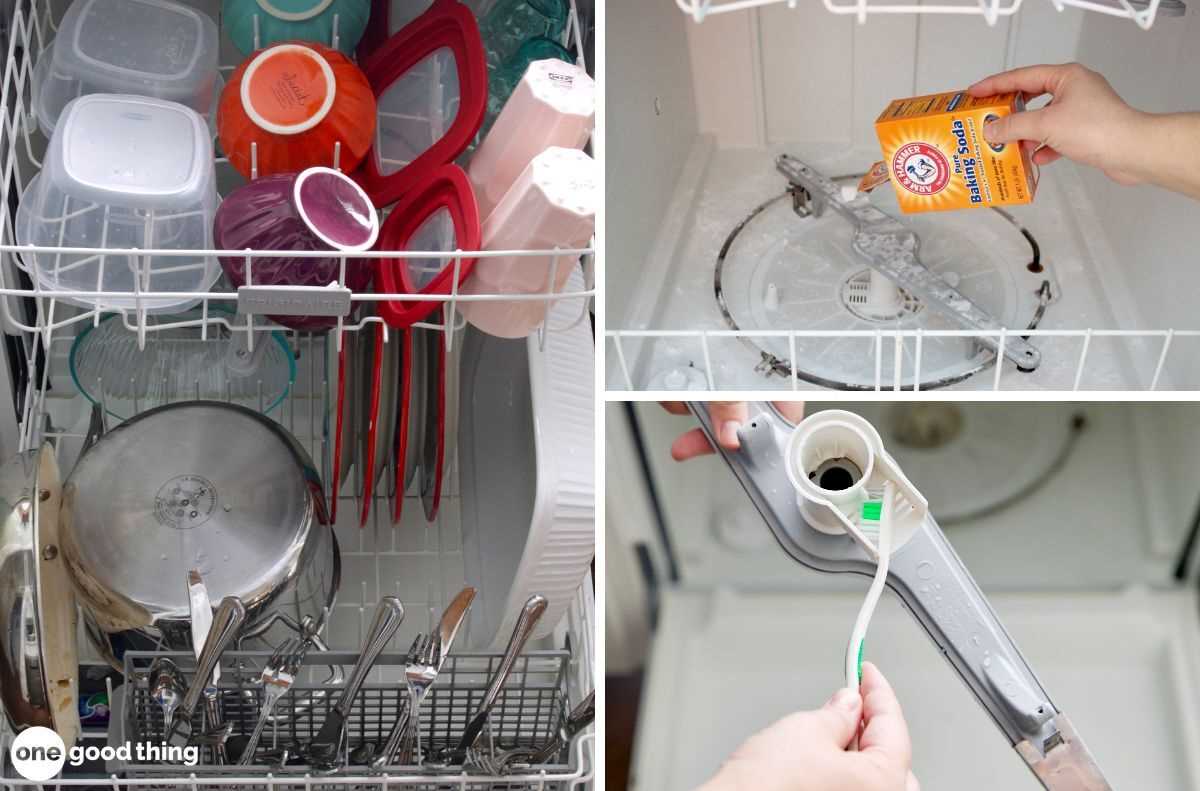
When disposing of bleach, follow the guidelines set by your local waste management regulations. Avoid pouring bleach down the drain or toilet, as it can contribute to water pollution. Instead, consider diluting the bleach and pouring it into a sealed container before disposing of it according to the appropriate method in your area.
9. Consider Alternatives
If you prefer to avoid using bleach or are looking for alternative cleaning methods, there are several natural and eco-friendly options available. These include vinegar, baking soda, hydrogen peroxide, and citric acid. Research and experiment with these alternatives to find the best solution for your cleaning needs.
10. Seek Medical Attention if Needed
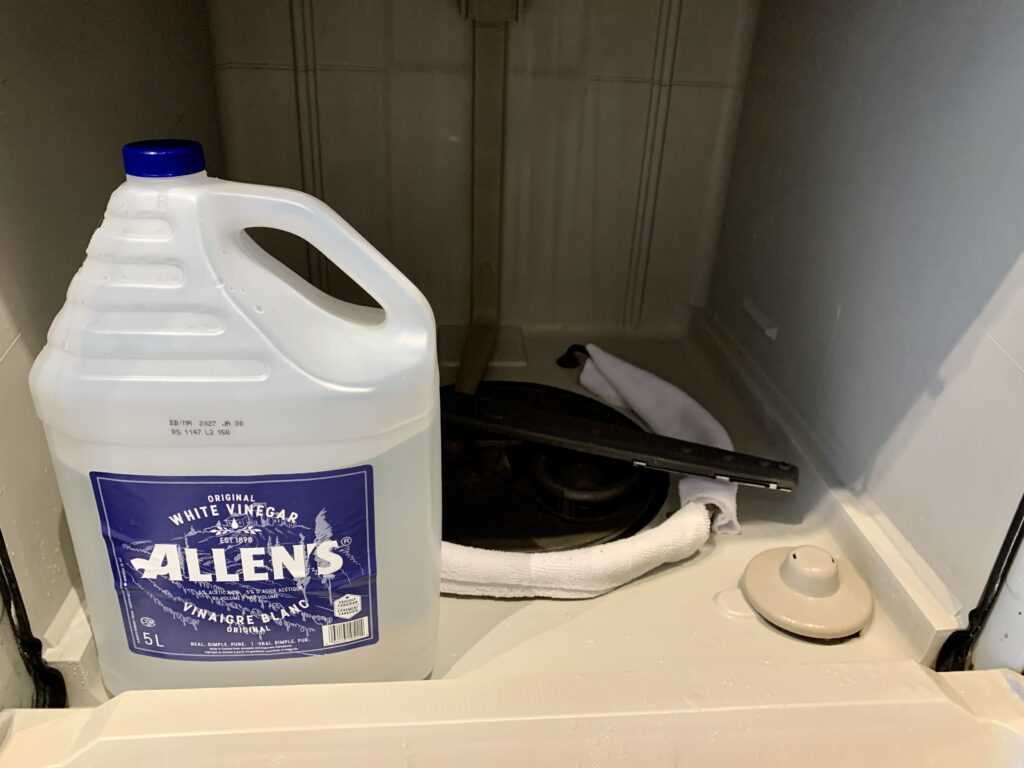
In case of accidental ingestion or exposure to bleach fumes, seek medical attention immediately. Keep the product label or container on hand to provide relevant information to medical professionals. Remember, it is always better to seek professional advice in case of emergencies or uncertainties.
FAQ
What is the best way to clean a dishwasher with bleach?
The best way to clean a dishwasher with bleach is to first remove any large debris or food particles from the dishwasher. Then, mix a solution of 1 cup of bleach and 1 gallon of water. Wearing gloves, use a sponge or cloth to wipe down the interior of the dishwasher with the bleach solution. Pay special attention to the spray arms, filters, and door seal. Let the bleach solution sit in the dishwasher for 10-15 minutes, then run a complete cycle with no dishes to rinse out the bleach. Finally, wipe down the interior of the dishwasher with clean water to remove any remaining bleach residue.
How often should I clean my dishwasher with bleach?
It is recommended to clean your dishwasher with bleach every 1-3 months, depending on how frequently you use it. Regular cleaning helps remove any build-up of soap scum, mineral deposits, and food particles that can accumulate over time and cause unpleasant odors or affect the performance of your dishwasher.
Can I use bleach to clean the exterior of my dishwasher?
No, it is not recommended to use bleach to clean the exterior of your dishwasher, especially if it is made of stainless steel. Bleach can cause discoloration or damage to certain materials. Instead, use a mild detergent or a stainless steel cleaner specifically designed for the exterior of appliances.
Are there any alternative methods to clean a dishwasher without bleach?
Yes, there are alternative methods to clean a dishwasher without bleach. One option is to use white vinegar. Simply pour a cup of vinegar into a dishwasher-safe bowl and place it on the top rack of the dishwasher. Run a complete cycle with no dishes. Vinegar helps remove odors and break down mineral deposits. Another option is to use baking soda. Sprinkle a cup of baking soda on the bottom of the dishwasher and run a complete cycle with no dishes. Baking soda helps remove stains and eliminates odors.
Is it necessary to wear gloves when cleaning a dishwasher with bleach?
Yes, it is highly recommended to wear gloves when cleaning a dishwasher with bleach. Bleach is a strong chemical that can irritate or burn the skin. Gloves provide a protective barrier and help prevent any potential skin reactions. It is always important to follow safety precautions when working with any cleaning products.











